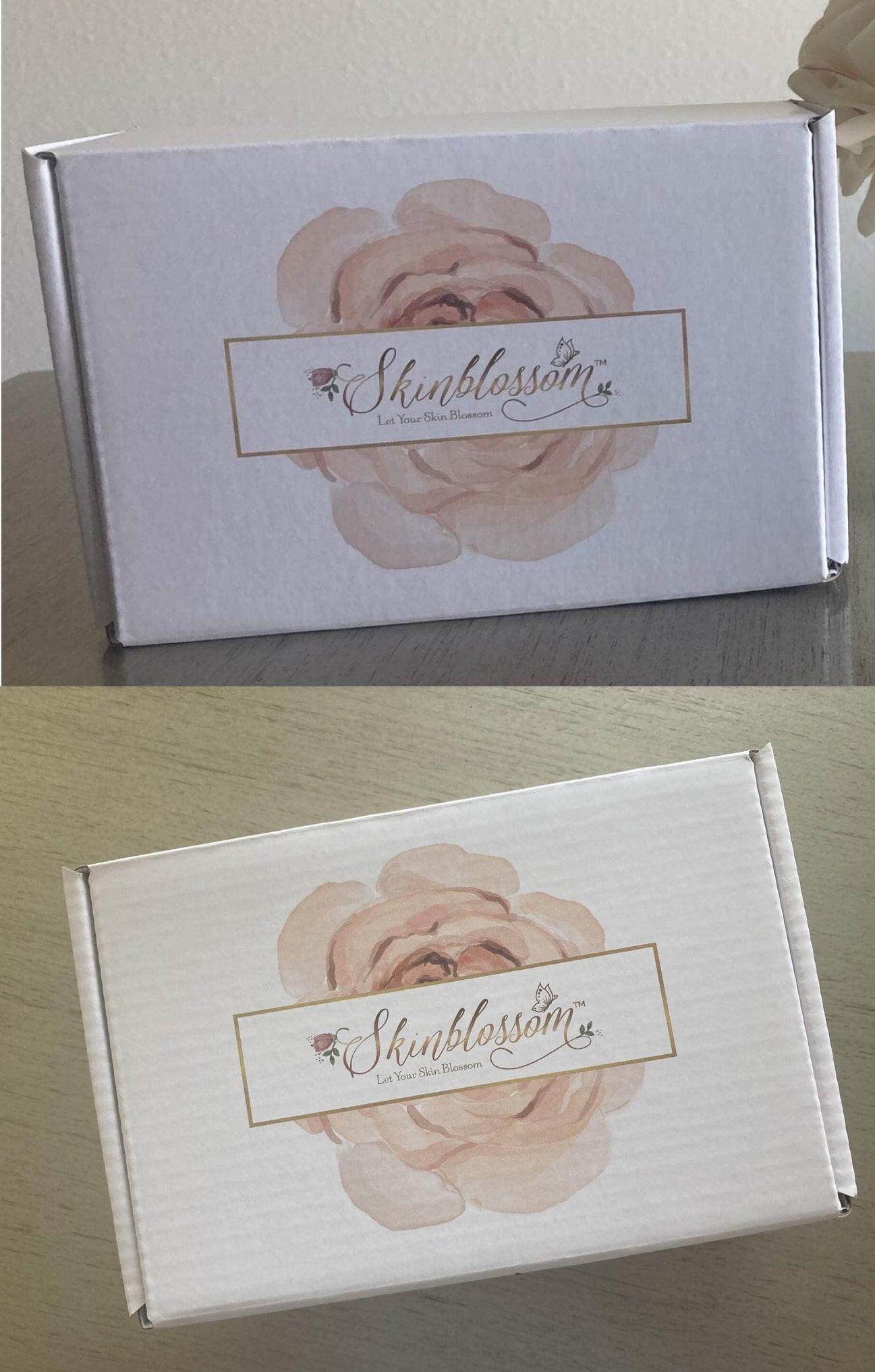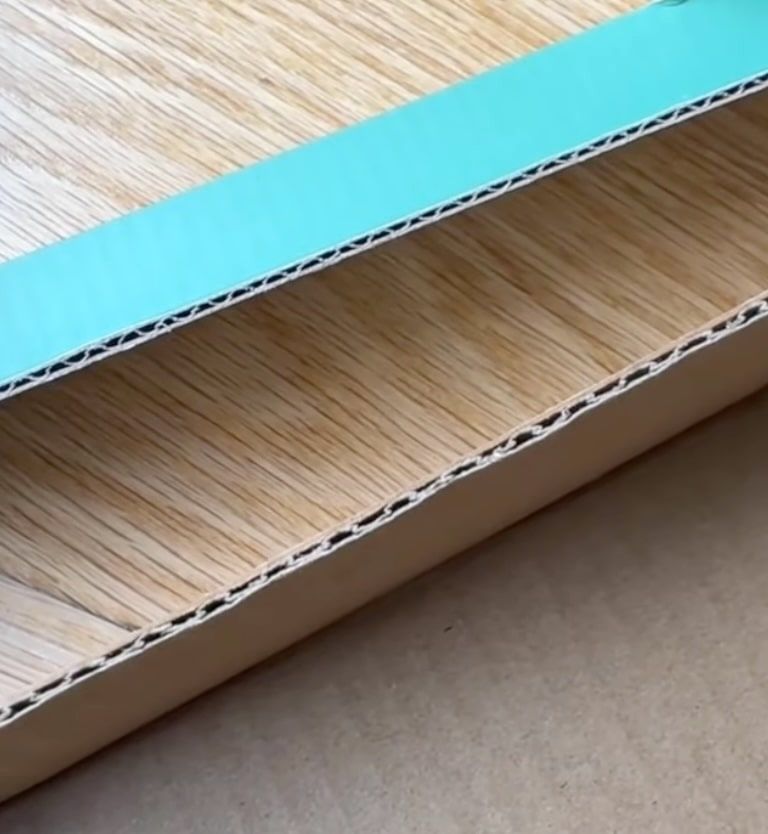What Is Flute In Packaging?
Flute, also called corrugation, is used to strengthen or reinforce the cardboard that's used in your packaging. They typically look like wavy lines which when glued to a paperboard, forms the corrugated board. Fluting in packaging gives your packaging the rigidity and helps withstand any crushing.
If you're a business owner or company selling products to consumers, you may have heard of flute in packaging. But what is it, and what does it do? Find the answer to this & many other aspects of packaging corrugation below.
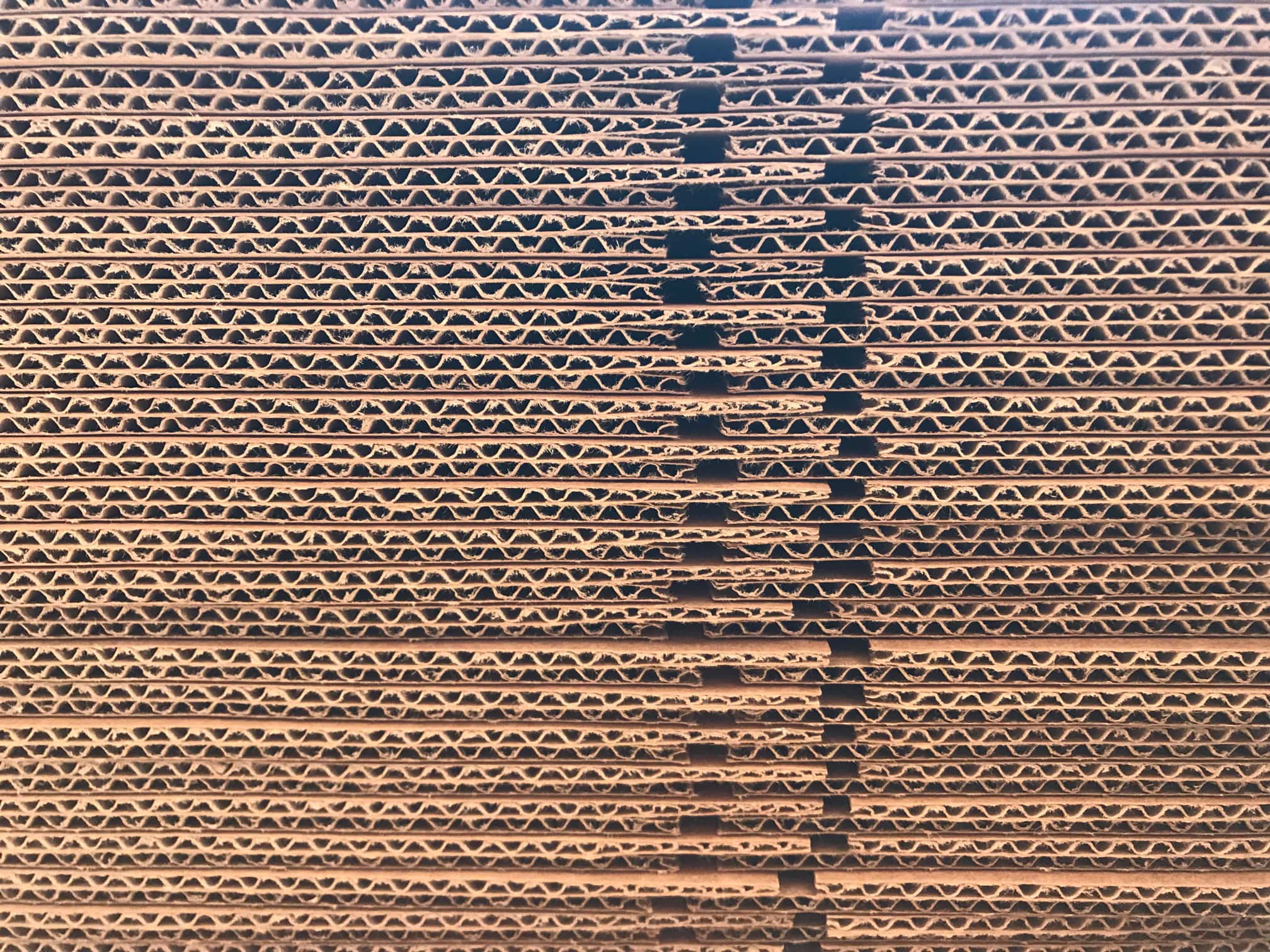
Corrugated Board Styles
Corrugated paper with single walled flutes can be stacked together for extra reinforcement. Smaller single walled flutes provide better printability and foldability, whereas larger flutes (typically double walled flute and above) provide greater strength and cushioning, making them ideal for shipping heavy items.
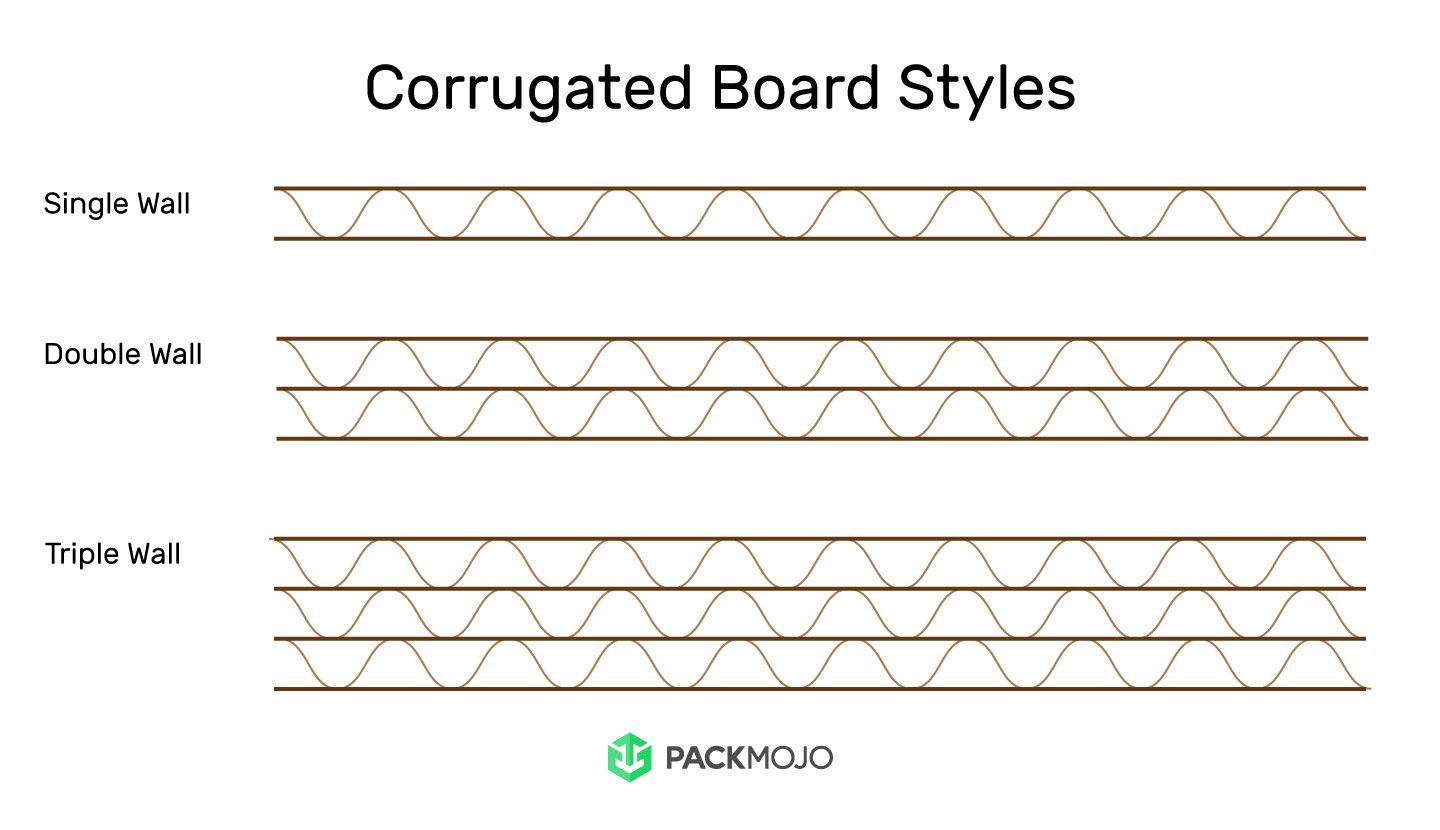
Comparing E-Flute & B-Flute
Flute is categorized by thickness of paper being folded (fluting paper). Most commonly, eCommerce and branded packaging use E-flute and B-flute. At a thickness of 1-2mm, E-flute is the most popular for eCommerce needs. However, for those with heavier items, B-flute at a thickness of 2.5-3mm is more suitable.
More Types of Flute in Corrugated Packaging
Types of Flute in Corrugated Packaging:
- A-flute: original fluting for corrugated boxes, thickest with highest arch size, good for fragile/delicate items, 36 flutes per foot.
- B-flute: used for food/retail/customized print packaging, second highest arch size, good stacking strength and crushing resistance, good for canned goods and POP displays, 49 flutes per foot.
- C-flute: most commonly used corrugated box flute, good cushioning/stacking/printing properties, used for shipping/corrugated box display packaging, good for glass/furniture/dairy, 41 flutes per foot.
- E-flute: second most commonly used corrugated box, eco-friendly, used to print high quality print graphics, used for die-cut boxes and retail/printed corrugated box packaging, good for cosmetic/ceramic/pizza boxes, 90 flutes per foot.
- F-flute: small/tighter, eco-friendly/lower fibre content packaging, looks of high value, provides solid structure, used for custom printed boxes and retail packaging, good for cosmetic/jewelry/shoe boxes, 128 flutes per foot.
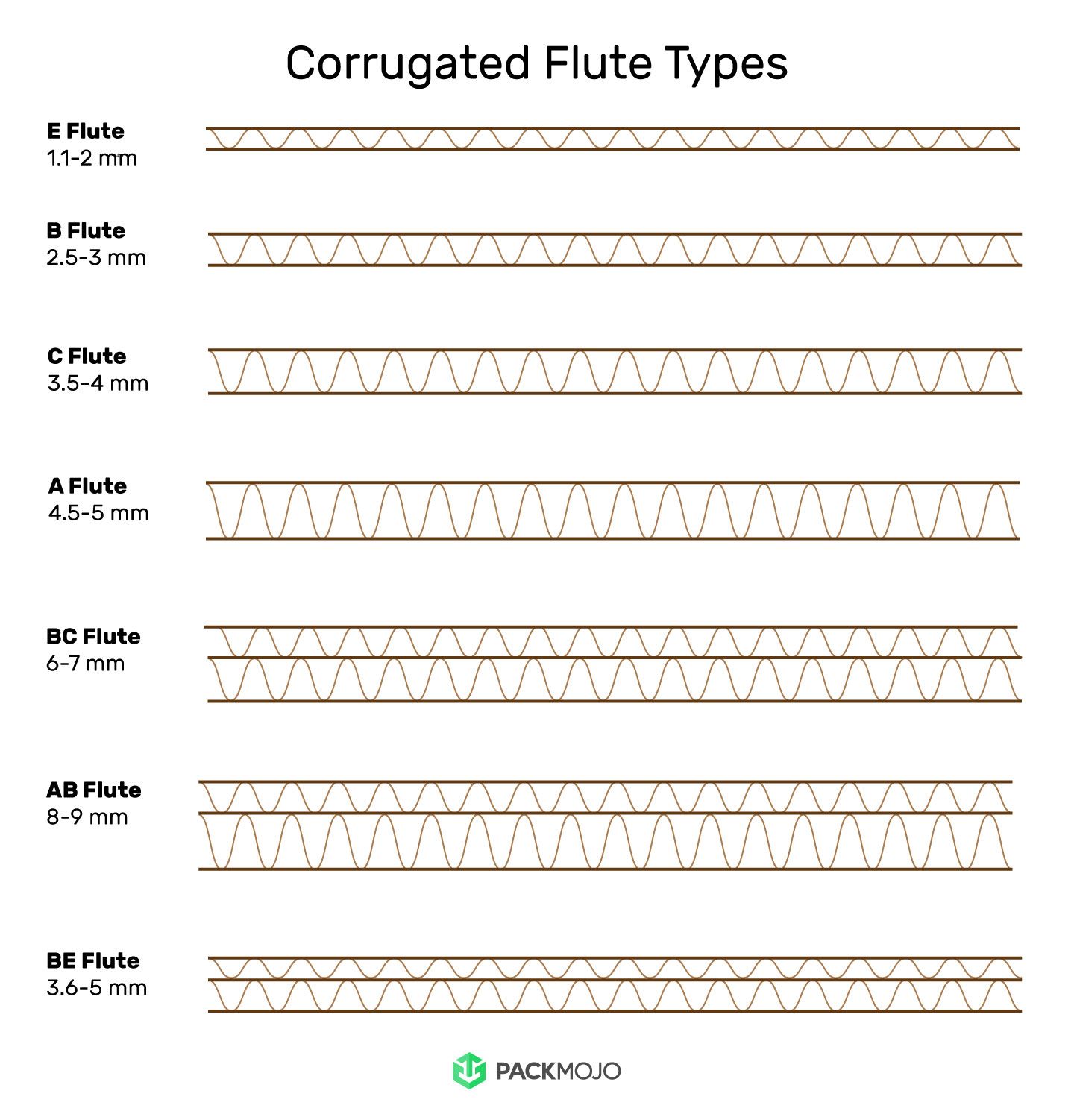
Flute Thickness
When you receive your boxes, you may notice that the visible flute at the edges of the box are compressed and not as 'tall' (or even visible sometimes). This is normal because during the production process, your boxes are slightly compressed and then diecut, meaning that the flute at the edges will be compressed down.
The best way to measure the flute thickness is by looking at the flute in the middle of the box, where there has been no compression whatsoever. This is the true thickness of your corrugated box, which will look different to the visible flute at the edges of the box.
When it comes to mailer box samples, these are made with sampling machines and are simply cut at the edges without any compression. This means that samples may appear to have flute that is 'taller' because it's uncompressed. When your boxes are produced in bulk, the edges will appear more compressed.
PackMojo's mailer boxes come with a standard E-flute. If you require a different flute, please get in touch with us!
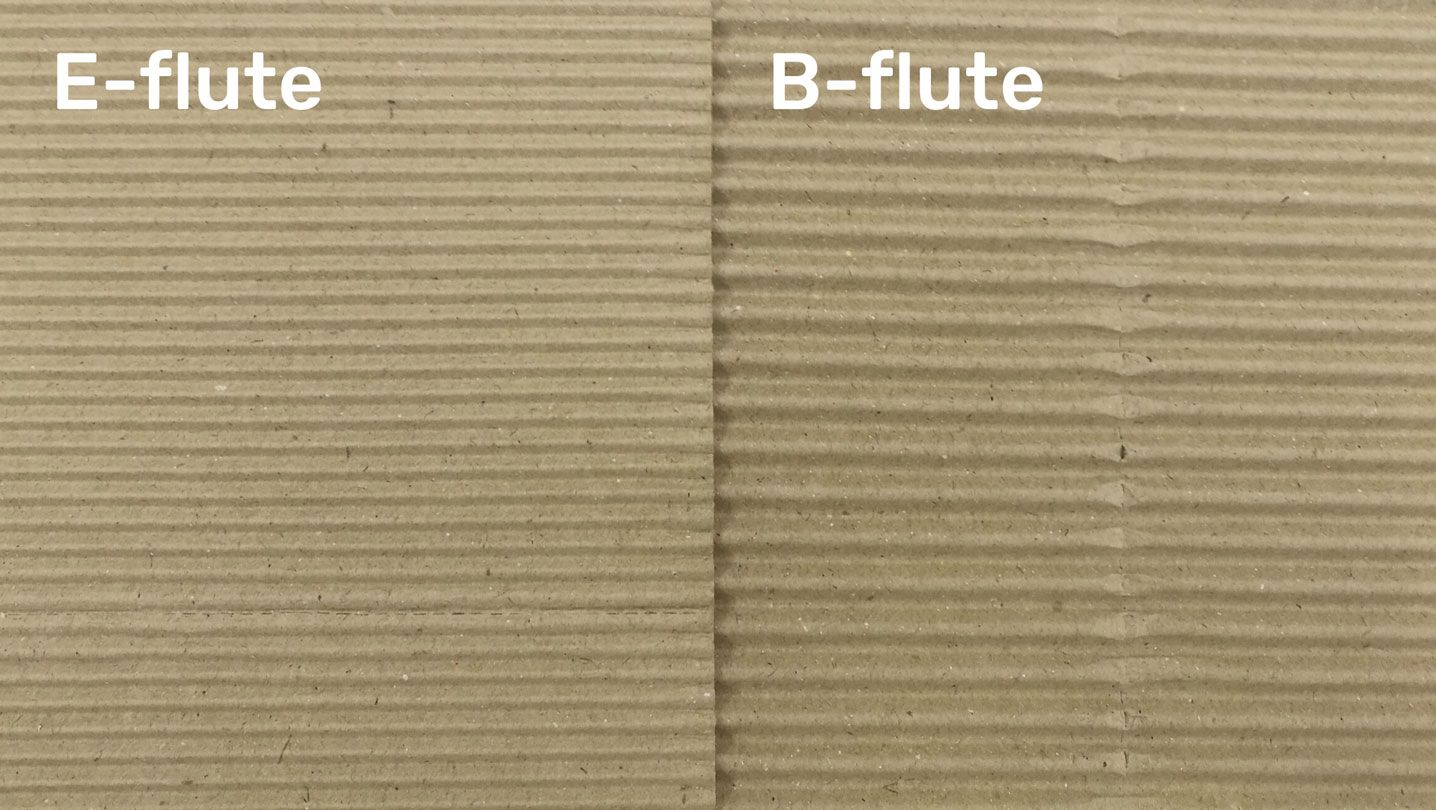
Flute Line Visibility
In some cases, flute lines can be seen on corrugated packaging. There are a few factors that can impact the visibility of flute lines:
- If the glue between the substrate and the corrugated board isn't dry enough, flute lines may be more visible. This can be more prevalent in samples such as structural samples and simplified samples.
- Lighter colors tend to show more visible flute lines compared to darker colors. If you want to minimize the appearance of flute lines, consider using darker colored designs, which reflect less light.
- The lighting environment can affect flue line visibility. As seen in the photo, the same box set in different lighting conditions can change the appearance of flute lines.
